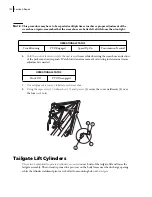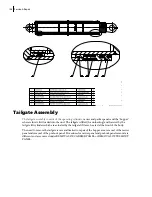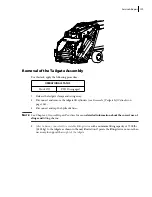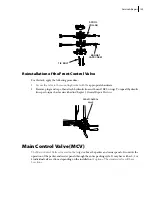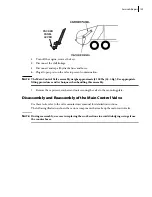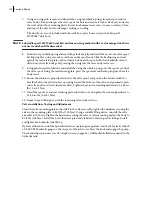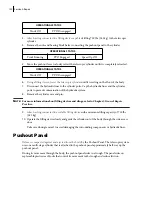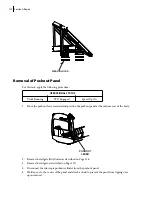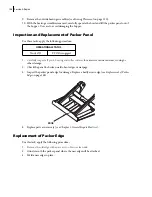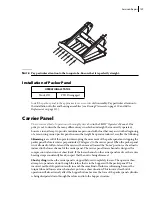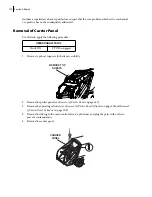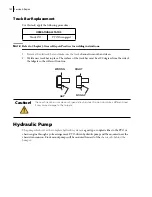
Service & Repair 137
Nylon sling, minimum 500 lb. rating
Lint free rags
Petroleum jelly
Parts Required:
Labrie
Plus
part # HYJ4104 - Section Seal Kit, one kit required for each section (does not include
plug or port relief seals)
Labrie
Plus
part # HYJ04107 - Inlet Section Seal Kit, one kit required per valve assembly
Thoroughly clean the valve, connecting hoses and the area directly surrounding the valve.
Valve Removal Procedure:
1.
Remove the hydraulic tank fill cap to relieve any air pressure from the reservoir.
2.
Remove the hoses (label them prior to removal to aid in re-assembly).
3.
Attach the lifting device to the valve using the nylon sling, then using the ¾” socket, 6” extension
and ratchet, remove the four ¾” bolts attaching the valve to the body.
4.
Drain the oil from the valve and set it on a clean, flat surface.
Valve Resealing Procedure:
1.
Using the ¾” socket and ratchet and a ¾” combination wrench, remove the four tie rods holding
the valve assembly together, and remove the tie rods. Thoroughly clean the tie rods, nuts and
washers, and lightly lubricate the threads of the tie rods.
2.
On the inlet section of the valve assembly, use an o-ring pick to remove and discard the old o-
rings, clean the inside face of the plate, and inspect for cracks, abnormal wear, rust or uneven
sealing surfaces. Slide the tie rods through the inlet cover and stand it upward (on end).
Lubricate the o-rings with petroleum jelly and install them into their corresponding seat in the
inlet section. Ensure the o-rings are pushed fully and evenly into their seats.
3.
Starting with the first valve work section, clean the sealing surface of the valve work section, and
inspect for cracks, abnormal wear, rust or uneven sealing surfaces. Carefully lower the valve work
section over the tie rods and mate it to the end plate. Using an o-ring pick remove and discard the
old o-rings. Clean the seats in the o-ring seal face and inspect for cracks, abnormal wear, rust, or
uneven sealing surfaces. Using petroleum jelly, lubricate and install the new o-rings, ensuring
they are seated fully into their corresponding seats.
4.
Repeat step 3 with the remaining valve work sections.
5.
Ensure that the flat sealing surface of the valve end cap is clean and inspect it for cracks, abnormal
wear, rust, or uneven surfaces. Carefully lower it over the tie rods and mate it to the valve work
section. Install the washers and nuts on the tie rods. Using a 3-step torque method, torque the tie
rods to 75 ft-lbs (102 Nm).
6.
Starting with the first valve section, use the ½” socket and ratchet and remove the bolts attaching
the spool actuator to the valve work section. Using the large Phillips driver, remove the 2 screws
attaching the spool eye end dust boot and seal plate; then remove the dust boot and seal plate.
Pull the spool out of the valve work section by grasping the valve spool actuator and gently
pulling it out.
Summary of Contents for 2R-III
Page 1: ...2R III MAINTENANCE MANUAL...
Page 2: ......
Page 3: ...2R III MAINTENANCE MANUAL...
Page 5: ......
Page 6: ......
Page 20: ...10 Introduction...
Page 42: ...32 Safety...
Page 58: ...48 Preventive Maintenance Figure 5 1 Hydraulic tank w return filter 1 2 3 4 5 6 7 8...
Page 66: ...56 Preventive Maintenance...
Page 102: ...92 Troubleshooting...


